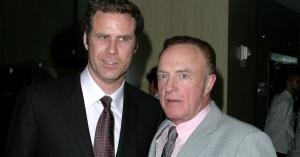Twitter locked President Donald Trump‘s account for the first time on Wednesday evening, as his supporters attacked the U.S. Capitol building. The social media platform has previously refused to actually remove Trump’s tweets or suspend his account, instead applying warnings and filters to them when they contain disinformation. In this case, the company finally took stronger action.
Twitter suspended Trump’s account, explaining that it would stay locked until two of his tweets were removed. They were a video in which he called on the rioters to disperse and a tweet reading: “These are the things and events that happen when a sacred landslide election victory is so unceremoniously [and] viciously stripped away from great patriots who have been badly [and] unfairly treated for so long. Go home with love [and] in peace. Remember this day forever!” In the video, Trump also asked the rioters to leave, but emphasized his conspiracy theories about the 2020 presidential election.
Videos by PopCulture.com
Twitter just deleted this pic.twitter.com/FPNJynp6Ae
— Quinton Reviews 🎬 (@Q_Review) January 6, 2021
Twitter acted just behind Facebook, which actually removed these posts from its platform outright. YouTube removed the video as well. Facebook’s “vice president of integrity,” Guy Rosen, tweeted: “This is an emergency situation and we are taking appropriate emergency measures, including removing President Trump’s video. We removed it because on balance we believe it contributes to rather than diminishes the risk of ongoing violence.”
As for Twitter, it’s official Safety account explained later in the night: “As a result of the unprecedented and ongoing violent situation in Washington, D.C., we have required the removal of three [Donald Trump] Tweets that were posted earlier today for repeated and severe violations of our Civic Integrity policy. This means that the account… will be locked for 12 hours following the removal of these Tweets. If the Tweets are not removed, the account will remain locked.”
Trump’s word whipped up the crowd that stormed the Capitol building in the first place, starting with a rally in Washington D.C. earlier in the afternoon. Trump advised his supporters to march to Congress, with provocative language that ultimately lined up with their actions. The crowd acted on his conspiracy theories about election tampering and voter fraud.
The ordeal began as a recognizable protest but quickly escalated into what was described as “a siege.” Demonstrators trampled fencing and barricades put in place by Capitol police, broke windows and other public property, and ran aimlessly through the chambers and offices of their elected representatives.
Most Viewed
-

LOS ANGELES – SEPTEMBER 4: BIG BROTHER Thursday September 4th on the CBS Television Network and streaming on Paramount+ (live and on-demand for Paramount+ with SHOWTIME subscribers, or on-demand for Paramount+ Essential subscribers the day after the episode airs)* Pictured L to R: Mickey Lee. (Photo by Mary Kouw/CBS News via Getty Images)







